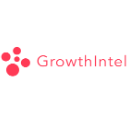Predictive Lead Scoring software: purchase guide
Predictive Lead Scoring: The Ultimate Buying Guide for 2025
The Sales Reality in 2025
Sales teams in 2025 are facing a paradox: more data, more leads… and less time than ever. While lead volume is growing thanks to content marketing, events, and inbound campaigns, not every lead deserves a rep’s attention. In fact, up to 79% of marketing leads never convert into sales, often because they’re not ready — or not a fit.
Predictive lead scoring solves this. By applying machine learning to your pipeline, it ranks leads by actual conversion potential, so your sales team can prioritize smarter, move faster, and stop wasting time on dead ends.
What Is Predictive Lead Scoring?
Predictive lead scoring is the use of artificial intelligence and historical data to evaluate how likely a lead is to become a paying customer. Unlike traditional lead scoring, which assigns points manually based on actions or demographics, predictive models:
Learn from real outcomes (won/lost deals)
Identify patterns across thousands of data points
Automatically score new leads based on behavior, firmographics, and engagement
This means no more gut feeling, no more rigid point systems — just data-driven prioritization you can trust.
Why Predictive Lead Scoring Matters in 2025
In today’s overloaded sales environment, not every lead deserves the same amount of attention — and in 2025, ignoring that reality can cost you real pipeline. Predictive lead scoring isn’t just about filtering leads; it’s about aligning sales effort with buyer intent, optimizing conversion efficiency, and scaling with precision.
Focus on What Actually Converts
Most sales teams still rely on manual rules or behavioral assumptions to prioritize leads. The result? Reps spend a significant amount of their time pursuing contacts who will never convert. Predictive scoring tackles this head-on by identifying high-potential leads based on patterns in past conversions. Instead of relying on open rates or job titles, it highlights which signals consistently precede a deal — and ranks leads accordingly.
This allows your reps to focus their time on leads with the highest probability of progressing, not just the ones that appear active.
Faster Sales Cycles, Less Pipeline Friction
Predictive scoring helps align timing with buying readiness. When a prospect exhibits conversion-signaling behavior — like a sequence of product page visits or a request for pricing — the model captures that and flags them immediately.
By surfacing these indicators early, sales teams can reach out before competitors or inertia take over. This responsiveness shortens deal cycles and gives your team the best chance to influence the decision early in the process.
True Alignment Between Marketing and Sales
One of the ongoing challenges in revenue operations is the disconnect between marketing’s definition of a qualified lead and sales’ expectations. Predictive models bridge this gap by grounding lead qualification in real outcomes — historical deal data, behavioral signals, and funnel velocity — rather than subjective scoring.
When both teams use the same model to assess lead readiness, the handoff improves, lead rejection rates drop, and campaigns can be optimized with confidence.
Higher ROI on Every Lead You Generate
Acquiring a lead — through paid media, events, content, or referrals — comes at a cost. But acquisition is only the first step. If sales reps spend time on the wrong contacts, your cost-per-opportunity increases, and so does your customer acquisition cost.
Predictive scoring ensures your best-fit leads receive immediate attention, while low-intent contacts are routed into longer-term nurturing flows. This alignment not only preserves sales team energy, but also increases the return on your lead generation investment.
Scalable, Adaptive, and Always Learning
Manual scoring systems tend to age quickly. What signaled intent six months ago might not today. Predictive models, however, retrain themselves on new data as more deals close — continuously refining which behaviors and attributes matter most.
As your business evolves — whether you enter a new vertical, launch a new product, or adjust your sales strategy — the model adjusts alongside you. That means your prioritization engine stays relevant without needing constant manual updates.
How Predictive Lead Scoring Works (Step-by-Step)
Predictive lead scoring platforms operate at the intersection of machine learning, behavioral data, and CRM intelligence. The goal is to turn raw lead data into actionable scoring — not just based on who a lead is, but what they do and how closely they resemble past successful conversions. Here’s how the process typically unfolds in practice:
1. Integrate Your CRM and Marketing Platforms
The first step is connecting your CRM and marketing automation tools to the predictive scoring platform. This allows the system to access historical and real-time data — such as lead source, email engagement, content downloads, and deal status — from platforms like Salesforce, HubSpot, or Marketo.
Proper integration ensures that data flows bi-directionally, enabling real-time updates and making sure lead scores stay current across your entire tech stack.
2. Ingest and Structure Historical Lead Data
Once the connection is established, the system pulls in your historical lead data. This includes all closed-won and closed-lost opportunities, along with leads that never progressed beyond the early stages.
For maximum effectiveness, the data should include both behavioral attributes (e.g., email open rates, demo requests) and firmographic characteristics (e.g., industry, company size, job role). This helps the model learn not only who buys, but how they buy.
3. Train the Predictive Model
Using this data, the system trains a machine learning model to detect patterns and correlations between lead attributes and outcomes. For example, it might uncover that buyers from mid-sized tech companies who attended a product webinar and requested a pricing page are 3x more likely to convert than average.
This model becomes the foundation for scoring — assigning each new lead a probability of conversion based on how closely they resemble previously successful prospects.
4. Score New Leads in Real Time
As new leads enter your system, the model scores them immediately based on how closely they match your ideal conversion patterns. These scores are typically updated continuously as new engagement data becomes available — such as downloading a whitepaper, revisiting your website, or responding to an email sequence.
This dynamic scoring ensures that lead prioritization evolves with behavior, not just firmographics.
5. Sync Scores Back to Your CRM
Once a lead is scored, that information is pushed back into your CRM so it’s visible to reps during outreach. Scores can be used to trigger alerts, assign leads to different sales tiers, or enroll contacts into specific workflows based on their conversion likelihood.
This step is crucial for making predictive scoring actionable — it puts the intelligence where your team works every day.
6. Continuously Retrain the Model
The most effective predictive scoring systems don’t stop learning once the model is deployed. As new leads close (or don’t), their data is fed back into the system. This continuous retraining process ensures the model remains accurate as your products, market, and buyer behavior evolve.
Without this feedback loop, models degrade over time — so choose a tool that makes retraining automatic or easy to schedule.
Implementation Tip
To build a strong custom model, you’ll typically need at least 200 to 300 converted leads with complete data across relevant fields. If your dataset is smaller, consider tools that offer pre-trained models based on your industry or audience type. These templates can help you get started quickly and still deliver strong initial accuracy.
Core Features to Expect in 2025
The best predictive lead scoring tools in 2025 aren’t just scoring engines — they’re intelligent orchestration layers that connect data, prioritize leads, and automate workflows across your revenue stack. Below are the core capabilities to look for when evaluating a platform, along with the impact each has on execution.
1. AI-Powered Scoring Engines
Modern platforms use advanced statistical models — such as logistic regression, decision trees, and neural networks — to identify what actually predicts conversion in your pipeline. These engines analyze historical data, detect meaningful patterns, and assign probability-based scores to new leads based on their resemblance to prior successes.
The key benefit here is accuracy. Instead of a fixed point system, the model evaluates hundreds of variables in real time, adjusting for nuances like buyer stage, content engagement, or geographic trends.
2. Real-Time CRM and Marketing Automation Integration
Effective lead scoring is only useful if it’s visible where your team works. Real-time integration with CRMs (like Salesforce or HubSpot) and marketing platforms (like Marketo or ActiveCampaign) ensures that lead scores automatically update as new data comes in — whether it's an email click, a demo request, or a change in job title.
This enables sales and marketing to take immediate action based on a lead’s evolving behavior and engagement profile, without waiting for batch updates or manual syncing.
3. Customizable Scoring Logic
Not all businesses convert leads the same way. Scoring platforms should allow customization based on your ideal customer profile (ICP). For example, a B2B SaaS company might prioritize firmographic factors like employee count and annual revenue, while a DTC brand may weigh time-on-site or purchase history more heavily.
Custom scoring logic lets your team define what “qualified” really means, ensuring the scoring model aligns with your go-to-market strategy and buyer personas.
4. Lead Segmentation and Routing Automation
Once leads are scored, they need to be routed efficiently — and this is where automation comes in. Tools should support rule-based segmentation that assigns leads to the right reps based on geography, vertical, company size, or score thresholds.
This capability eliminates manual assignment, reduces lead response time, and helps distribute pipeline based on rep specialization or workload — a crucial factor in high-velocity or tiered sales environments.
5. Reporting, Dashboards, and Score Performance Tracking
Visibility into model performance is essential. Look for tools that include dashboards showing conversion rates by score range, model accuracy over time, and pipeline progression by segment. These insights help you validate the model, communicate impact to leadership, and refine campaigns based on what’s working.
The more transparent and granular the reporting, the easier it is to build confidence in the model across marketing and sales teams.
6. No-Code Model Management
In 2025, waiting on data scientists for every scoring adjustment is no longer necessary. Best-in-class platforms offer no-code interfaces that allow business users — from RevOps to marketing managers — to test variables, refine scoring logic, and deploy changes safely.
This democratization of model tuning accelerates iteration, reduces dependency on technical teams, and keeps the scoring model aligned with changing business priorities.
Top Predictive Lead Scoring Tools in 2025
| Software |
Key Features |
Strengths |
Free / Pricing Info |
Implementation Insights |
| ZoomInfo |
B2B intelligence, real-time intent, CRM enrichment |
Market-leading data accuracy, native integrations |
Free trial, pricing on request |
Fast onboarding, strong CRM fit |
| Growth Intelligence |
Predictive scoring, campaign optimization |
Custom models, strong for B2B demand gen |
Free trial, pricing on request |
Ideal for marketing automation flows |
| Adscore |
Predictive scoring for real estate |
Built for brokers and agencies |
Free trial, pricing on request |
Quick setup with real estate CRMs |
| Sypher |
Intent scoring, auto-nurturing |
Smart insights, strong analytics |
Free trial, pricing on request |
Deep Salesforce & HubSpot integration |
| MarketDirect Cross Media |
Scoring + multichannel campaign builder |
Best for multichannel engagement |
Free trial, pricing on request |
Includes automation & personalization |
| Podium |
Review management + lead qualification |
Local business focus, improves conversion trust |
Free trial, pricing on request |
Simple CRM integration, fast time-to-value |
Predictive Lead Scoring Trends for 2025 and Beyond
As buyer behavior continues to evolve and data privacy reshapes how we market and sell, predictive lead scoring platforms are adapting fast. The tools that succeed in 2025 won’t just assign scores — they’ll enable smarter, faster, and more personalized decision-making across the revenue funnel. Here’s what’s shaping the future — and what to look for when evaluating solutions.
AI-Powered Personalization at the Messaging Level
Modern scoring tools no longer stop at lead prioritization. They increasingly influence what message is delivered, when, and through which channel — all based on score tier, behavioral intent, and historical context. This capability connects predictive scoring with dynamic content delivery in marketing automation platforms.
What to look for: Choose tools that integrate natively with MAPs or customer data platforms (CDPs) to enable real-time personalization of emails, CTAs, or retargeting campaigns based on lead score.
A Shift to First-Party Data as the Core Input
With the phase-out of third-party cookies, predictive models are now powered primarily by first-party data: CRM fields, email engagement, product usage, and on-site behavior. This shift makes data compatibility and cleanliness more critical than ever.
What to look for: Prioritize vendors that support flexible ingestion of CRM, MAP, and product usage data — and provide tools to deduplicate, standardize, or enrich that data at the point of ingestion.
Voice and Chat Transcription Becomes Actionable
Call recordings and live chat interactions are being mined for intent signals, objections, sentiment, and buying triggers. These qualitative inputs are becoming a valuable layer in lead scoring models, especially in sales-led or high-touch motion environments.
What to look for: Ask vendors if they support integrations with conversation intelligence platforms (like Gong or Chorus) or have native NLP capabilities to incorporate call/chat data into scoring.
No-Code Predictive UX for Business Users
Scoring tools are becoming more accessible. The newest generation allows marketers and RevOps teams to visualize, adjust, and test models without engineering support. This speeds up iteration and reduces bottlenecks during rollout.
What to look for: During evaluation, request a live demo of the model builder or rules engine. Make sure your non-technical team can modify score logic, test variables, and simulate lead flows independently.
Continuous Model Retraining, Not Just Scheduled Updates
Stagnant models erode quickly. Leading platforms now retrain scoring models weekly — or even continuously — based on new data points, conversion patterns, or campaign feedback loops. This ensures your model stays aligned with real buyer behavior and doesn’t need constant manual oversight.
What to look for: Confirm how often the model retrains, whether retraining is automatic or manual, and how much historical data is required to maintain performance. Also ask how model changes are tracked and communicated internally.
How to Choose the Right Predictive Lead Scoring Tool
Choosing the right predictive lead scoring solution isn't about picking the tool with the most features — it’s about selecting one that fits your revenue model, data ecosystem, team maturity, and go-to-market strategy. Here’s how to approach the decision with clarity and purpose:
1. Align the Tool with Your Business Model
Start by identifying whether the tool has been tested and optimized in businesses like yours. A B2B SaaS platform, for instance, may require features like usage-based scoring and lifecycle segmentation. A real estate firm may prioritize location filters, contact behavior, or CRM compatibility with industry-specific tools.
What to do: Ask for case studies or demo environments tailored to your vertical. Generic functionality often misses the nuance needed for effective scoring.
2. Ensure Seamless Data Compatibility
Your scoring tool must work with your existing stack — not around it. This includes native integration with your CRM (e.g., Salesforce, HubSpot) and your marketing automation platform (e.g., Marketo, Pardot). Without this, lead scores may lag, fail to sync, or be siloed, making them unusable in real time.
What to do: List your core systems and request a technical validation from each vendor. Confirm whether integrations are built-in, require custom connectors, or need middleware like Zapier or Workato.
3. Evaluate Usability for Business Users
Scoring should be accessible to sales ops, RevOps, or marketing — not just data teams. If adjusting score weights, reviewing score history, or segmenting by performance requires advanced technical skills, adoption will be slow and limited.
What to do: During the product tour, request to adjust a model or scoring rule without developer input. If this feels too complex, it likely will be once live.
4. Prioritize Model Transparency
Avoid black-box models that generate scores without explanation. You should be able to understand how and why a lead received a specific score — and adjust the logic if your ICP or sales process evolves.
What to do: Ask the vendor to walk you through an individual lead’s score and the variables that influenced it. Transparency builds trust, especially when aligning marketing and sales teams on scoring logic.
5. Clarify Onboarding and Support
Even the best tools fall short without proper implementation. Make sure the vendor offers onboarding resources that fit your team’s bandwidth and technical capabilities. Look for live support, documentation, training for end users, and model testing environments.
What to do: Request a sample onboarding plan with timelines, milestones, and support availability. Ask whether you’ll have access to a sandbox where you can experiment with real data before going live.
Bonus Consideration: Test with Your Own Data
Before committing, ask for a live demo or pilot using your historical lead data. This will give you an early look at model performance, scoring logic, and accuracy — not just promises.
Common Mistakes to Avoid
Even with the right platform, predictive lead scoring can fall short if certain fundamentals aren’t respected. Here are the most common pitfalls to watch for — and how to avoid them.
1. Overweighting Demographic Fit
It’s tempting to build your scoring logic around surface-level data like job title, company size, or industry. But while firmographics help define your ICP, they rarely predict purchase intent alone. Behavioral signals — such as product interactions, page visits, or timing of engagement — often provide stronger indicators of sales readiness.
Avoid this by: Combining firmographic filters with behavioral triggers and engagement scoring to create a fuller picture of lead quality.
2. Letting the Model Go Stale
A scoring model built on last year’s data may no longer reflect your current audience or market conditions. Buyer behavior evolves, products change, and sales strategies shift. Yet many teams set up a model once and never retrain it.
Avoid this by: Scheduling regular retraining — ideally every quarter — or selecting a platform that offers continuous learning based on new outcomes.
3. Misalignment Between Sales and Scoring Criteria
If your model identifies leads as high-scoring, but your SDRs and AEs don’t agree (or don’t act accordingly), the system loses impact. Scoring logic needs to reflect what your sales team considers “qualified” — not just what the algorithm predicts.
Avoid this by: Involving sales stakeholders early in the model design process. Share performance data regularly to validate alignment and collect feedback.
4. Overcomplicating the Setup
It’s easy to assume that more variables, advanced configurations, or layered logic will yield better accuracy. In practice, over-engineering the scoring system can create confusion, slow adoption, and reduce agility.
Avoid this by: Starting with a minimal viable model and refining based on results. Simpler, more transparent scoring often drives faster impact — and is easier to maintain across teams.
5. Ignoring Downstream Performance Metrics
A lead scoring system isn’t just about lead prioritization — it should improve downstream results like opportunity creation, win rates, and deal velocity. If your model isn’t moving these metrics, it’s time to reevaluate.
Avoid this by: Tracking conversion rates and win rates by score tier, and using that data to iterate the model. Scoring should be tied to revenue outcomes, not just activity signals.
Conclusion: Smarter Pipeline, Faster Wins
Predictive lead scoring isn’t hype — it’s a performance multiplier. In 2025, the best sales teams are no longer chasing every lead. They’re focusing where it matters most, thanks to models that work silently in the background.
The right tool doesn’t just score leads — it transforms your pipeline strategy. Better conversion rates, faster sales cycles, less wasted effort. That’s the power of predictive.
Explore the tools, try the demos, and pick the platform that aligns with your stack and goals. Because the future of lead management isn’t just data-driven — it’s predictive.





